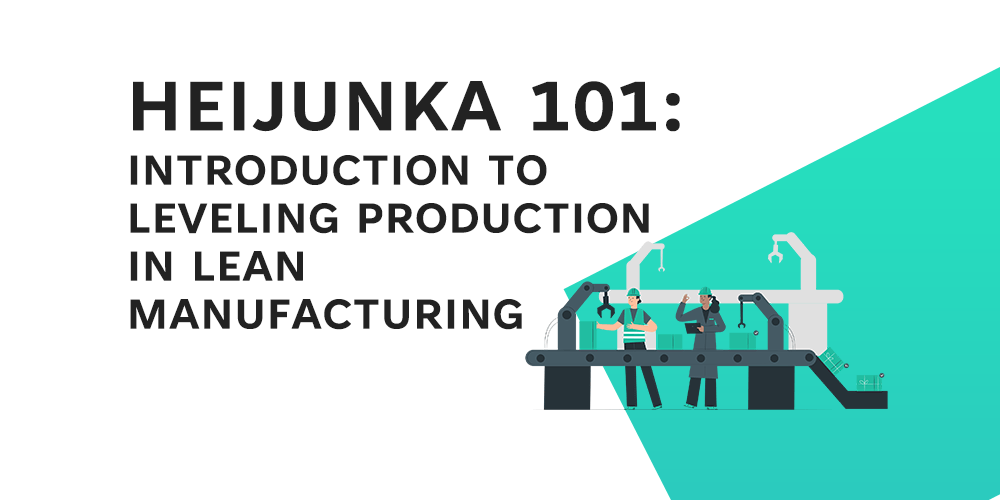The concept of Heijunka, a powerful technique for leveling production to create a smooth, balanced workflow, is central to Lean Manufacturing. We will delve into the principles of Heijunka production leveling in lean manufacturing, its critical role in the industry, and how it can revolutionize your operations to achieve increased efficiency and customer satisfaction in this comprehensive introduction.In today’s highly competitive manufacturing landscape, businesses are constantly striving to improve efficiency, minimize waste, and enhance productivity. Lean Manufacturing, a methodology focused on the relentless pursuit of waste elimination and value maximization in manufacturing processes, is one of the most effective strategies for achieving these goals.
Heijunka, which derives from Japanese manufacturing practices, is an essential tool in the Lean Manufacturing toolbox. It enables manufacturers to become more agile, responsive, and customer-focused by promoting a leveled production schedule. In the sections that follow, we will go over the concept of Heijunka production leveling in lean manufacturing, look at its various components, and share practical implementation strategies. This guide will provide valuable insights and tools to optimize your operations through Heijunka, whether you are new to Lean Manufacturing or looking to improve your current production system. So let us begin our journey toward mastering production leveling and realizing the full potential of lean manufacturing.
Table of Contents
What is Hijunka
Heijunka, also known as “production levelling” or “production smoothing,” is a Lean Manufacturing technique for balancing production workloads, minimizing fluctuations in demand, and optimizing resource utilization. Heijunka’s core principles revolve around maintaining a consistent production pace, matching production to customer demand, and minimizing the impact of variability in the manufacturing process.
Heijunka Production Leveling in Lean Manufacturing
Heijunka’s main goal is to level production. Heijunka assists manufacturers in avoiding overproduction and underproduction by evenly distributing production volume and product mix over a specified period, thereby reducing inventory costs and production bottlenecks. In essence, Heijunka ensures that the right products are produced at the right time and in the right quantity, all while maintaining a smooth production flow. This is accomplished through a variety of techniques, including calculating takt time (availability divided by customer demand), sequencing production tasks, and adjusting production schedules based on demand patterns.
Benefits of Implementing Heijunka
Reduced waste: Heijunka reduces waste by matching production to customer demand, preventing overproduction, and reducing excess inventory. By leveling the workload, manufacturers can avoid the need for costly last-minute adjustments, such as overtime or expedited shipping, to meet fluctuating demand.
Improved efficiency: With Heijunka in place, manufacturers can keep a more consistent production pace and make better use of resources like labor, equipment, and materials. This increased efficiency results in lower operating costs and higher profit margins.
Enhanced flexibility: By smoothing production, Heijunka allows manufacturers to respond more effectively to changes in customer demand or market conditions. This increased agility enables businesses to capitalize on new opportunities and respond quickly to changes in the competitive landscape.
Increased customer satisfaction: Heijunka contributes to higher levels of customer satisfaction by ensuring that products are consistently available when customers need them. Furthermore, by streamlining production processes and reducing lead times, manufacturers can deliver products to customers more quickly and efficiently, increasing customer satisfaction and loyalty.
Components of Heijunka
Heijunka Box
The Purpose and Use of Heijunka Box
In order to implement production levelling in Lean Manufacturing, the Heijunka Box is a visual scheduling tool. It aids in the organization and management of production orders by allocating resources and tasks evenly over a set time period. The Box typically consists of a grid with rows representing various products or product families and columns representing time intervals such as hours, shifts, or days. Production cards, which indicate the product type, quantity, and production sequence, are placed in the appropriate grid cells to create a visual representation of the leveled production schedule.
Setting up a Heijunka Box for Production Leveling
To set up a Heijunka Box for production leveling, follow these steps:
a. Select the products or product families that will be included in the Box.
b. Based on your production schedule and cycle times, determine the time intervals for the columns.
c. Determine the takt time for each individual product or product family.
d. Distribute production cards to grid cells based on calculated takt times and desired production sequence, ensuring even workload and resource distribution.
e. Regularly update and adjust the Box in response to changes in customer demand, resource availability, or production constraints.
Heijunka Board
Heijunka Board’s Function and Application
The Heijunka Board is another visual tool used in conjunction with the Heijunka Box to facilitate production leveling in Lean Manufacturing. The primary purpose of the Heijunka Board is to provide a real-time, visual representation of the production process, allowing team members to monitor progress, identify potential bottlenecks, and make necessary adjustments to maintain a smooth and balanced workflow. The Heijunka Board typically displays the production status of each product or product family, along with relevant information such as lead times, due dates, and work-in-progress.
Using the Heijunka Board to visualize production leveling
Follow these steps to visualize production leveling with a Heijunka Board:
a. Design a visual layout that depicts your manufacturing process, with designated areas for each product or product family and the associated stages of production.
b. Represent work orders or tasks in the manufacturing process with color-coded cards, magnets, or other visual indicators.
c. Arrange the visual indicators on the Heijunka Board to represent the current status of each work order or task.
d. Regularly update the Heijunka Board as tasks are completed or new orders are received, ensuring that production leveling is maintained and that the entire team is aware of the production status.
e. Use the Heijunka Board to identify bottlenecks, adjust resource allocation, and make data-driven decisions to improve overall efficiency and production leveling.
Heijunka in Practice
Step-by-Step Implementation Process
Analyzing production data: Begin by collecting and analyzing historical production data, including customer demand patterns, production volumes, cycle times, and resource utilization. This data will aid in identifying areas for improvement and will serve as a foundation for implementing production leveling.
Takt time calculation: Takt time is an important factor in production leveling. Calculate the takt time for each product or product family by dividing the available production time by the customer demand during that time period. This provides a target production rate to meet customer demand while minimizing waste.
Determining the production sequence: Based on the takt time calculations and other factors such as changeover times and resource availability, determine the optimal production sequence that ensures a smooth and balanced workflow.
Creating a leveled production schedule: Based on the calculated takt times and production sequence, create a leveled production schedule that distributes production tasks evenly across the available time and resources. This schedule should be updated and adjusted on a regular basis to account for changes in customer demand and production constraints.
Integrating Heijunka with Other Lean Tools
Relationship between Heijunka and Kanban: Kanban is a visual scheduling system that complements production leveling. While Heijunka focuses on balancing production volume and mix, Kanban ensures that materials and resources are available at the appropriate time and quantity. Integrating Heijunka and Kanban helps create a seamless, demand-driven production system that reduces waste and increases efficiency.
Heijunka and Just-In-Time Manufacturing: JIT Manufacturing is a Lean manufacturing strategy that aims to produce only what is needed, when it is needed, and in the exact quantity required. Heijunka production leveling supports JIT by aligning production with customer demand and minimizing inventory levels, reducing waste and costs.
Heijunka and Kaizen: Kaizen, or continuous improvement, is a core Lean Manufacturing principle that encourages ongoing efforts to improve processes and eliminate waste. By implementing Heijunka production leveling, manufacturers lay the groundwork for continuous improvement by identifying inefficiencies, monitoring performance, and adjusting processes to optimize workflow and resource utilization. Integrating Heijunka and Kaizen fosters a culture of continuous improvement, ultimately driving long-term success and competitiveness in the manufacturing industry.
Overcoming Heijunka Challenges
Identifying Common Obstacles in Implementing Heijunka
Numerous difficulties can arise when implementing Heijunka production leveling in Lean Manufacturing, such as:
Resistance to change: Employees and management may be reluctant to adopt new processes or methodologies, especially if they are unfamiliar with Lean Manufacturing principles or perceive the changes as disruptive.
Inadequate or inaccurate data: Heijunka creates leveled schedules using accurate and comprehensive production data. Incomplete or inaccurate data can make Heijunka implementation less effective.
High product variability: Manufacturers with a diverse product line or complex manufacturing processes may find it more difficult to effectively apply Heijunka.
Fluctuating customer demand: It can be difficult to maintain a leveled production schedule when demand patterns are rapidly changing or unpredictable.
Strategies for Successful Heijunka Implementation
Educate and engage stakeholders: Ensure that all employees, from shop floor workers to upper management, are aware of the principles and benefits of Heijunka production leveling. To promote a culture of continuous improvement and Lean Manufacturing, provide training and resources.
Establish precise data collection and analysis procedures: Implement systems for collecting and analyzing production data, such as customer demand patterns, production volumes, cycle times, and resource utilization. Accurate data is required for effective Heijunka implementation.
Simplify and standardize production processes: To facilitate Heijunka implementation, reduce product complexity and standardize production processes wherever possible. Consolidating product families, shortening changeover times, and streamlining resource allocation are some examples.
Keep an eye on and make adjustments: Review and adjust the Heijunka production schedule on a regular basis to account for changes in customer demand, resource availability, and production constraints. Maintain open communication channels and encourage employee feedback to continuously improve the Heijunka process.
Adapting Heijunka Heijunk to Difference Industries and Environments
While Heijunka is most commonly associated with automotive and discrete manufacturing, it can be adapted and applied to a wide range of industries and production environments, such as process manufacturing, service industries, and supply chain management. The key to successful adaptation is understanding the underlying principles of Heijunka and tailoring the implementation approach to the specific needs and constraints of the industry or production environment.
Modifying the Heijunka Box or Board, adjusting production sequences, or employing alternative metrics to measure and monitor production leveling are all possible. Businesses can reap the benefits of this powerful Lean Manufacturing technique and drive continuous improvement across their operations by tailoring Heijunka to the unique requirements of different industries and production environments.
Conclusion
In conclusion, Heijunka production leveling is a powerful and necessary component of Lean Manufacturing that can significantly improve efficiency, reduce waste, and boost customer satisfaction. By understanding the core principles of Heijunka, implementing the right tools such as the Heijunka Box and Board, and overcoming common challenges, manufacturers can successfully transform their operations and gain a competitive edge in today’s dynamic market.
In addition, combining Heijunka with other Lean Manufacturing tools such as Kanban, Just-In-Time Manufacturing, and Continuous Improvement (Kaizen) can result in a more effective and comprehensive approach to operational excellence. Heijunka’s benefits can be realized across a wide range of industries and production environments by adapting it to different industries and production environments.
Finally, the key to success in implementing this method is to foster a culture of continuous improvement and to embrace Lean Manufacturing principles. By doing so, businesses can realize their full potential and thrive in an ever-changing and competitive global marketplace.
References
Coleman, B.J. and Vaghefi, M.R., 1994. Heijunka (?): A key to the Toyota production system. Production and inventory management journal, 35(4), p.31.
Hüttmeir, A., De Treville, S., Van Ackere, A., Monnier, L. and Prenninger, J., 2009. Trading off between heijunka and just-in-sequence. International journal of production economics, 118(2), pp.501-507.








